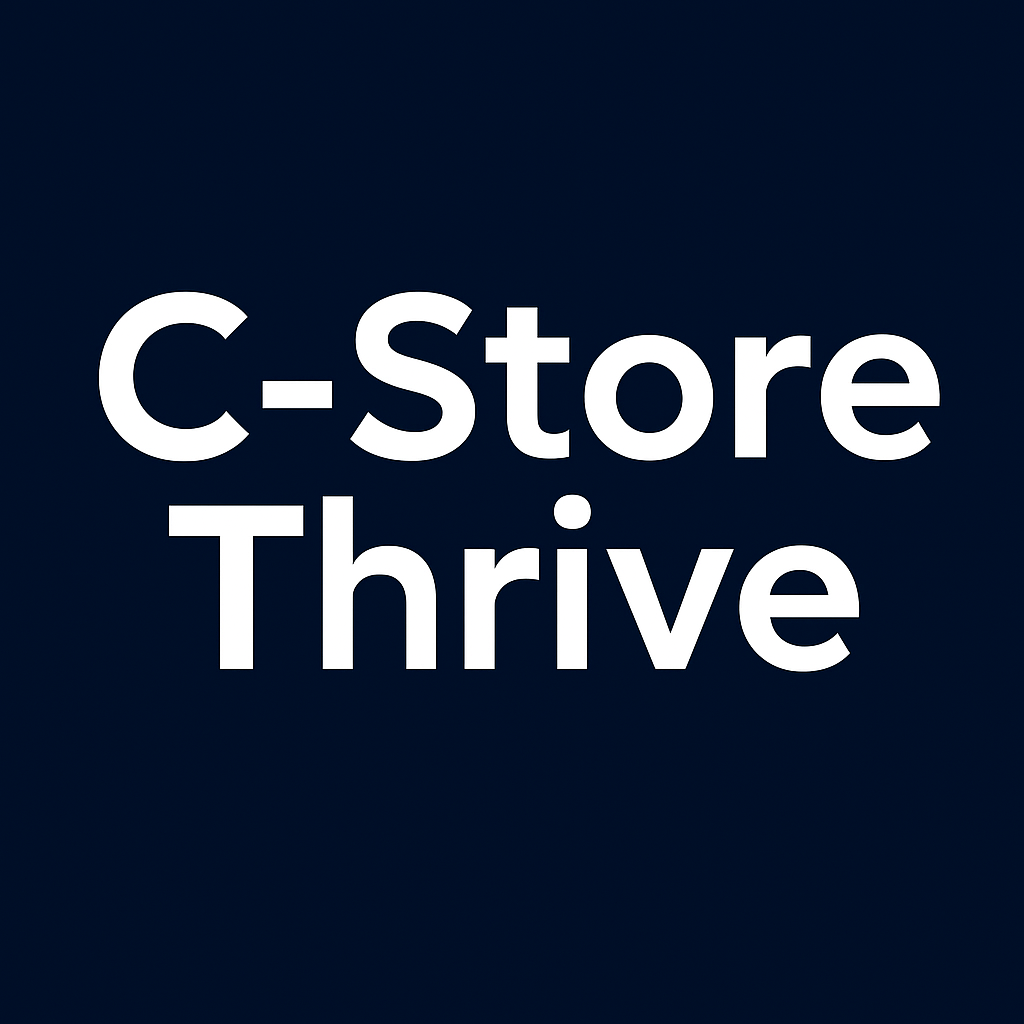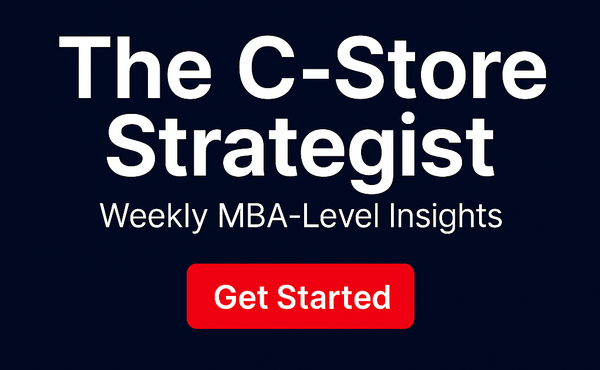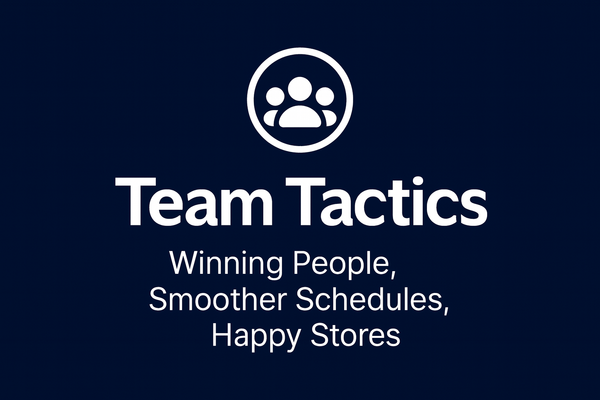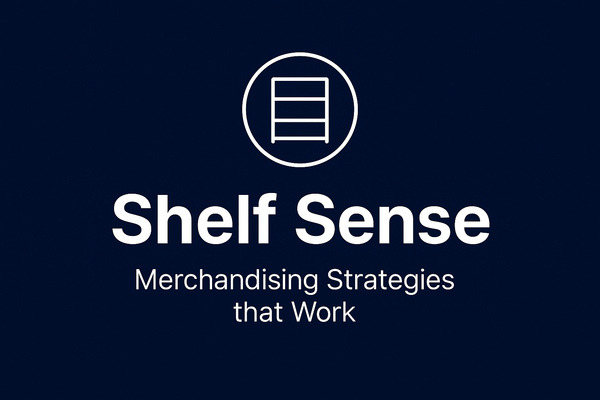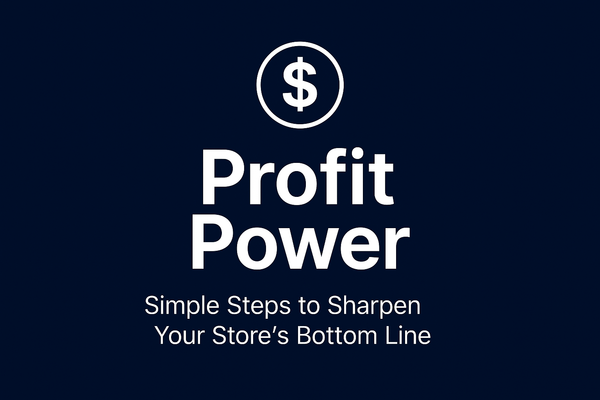The Atmosphere Advantage: How Store Environment Drives Customer Spending in Convenience Retail
Your store’s atmosphere is your silent salesperson. Learn how lighting, layout, cleanliness, and sensory cues work together to extend dwell time, increase basket size, and transform your store from a stop into a destination.
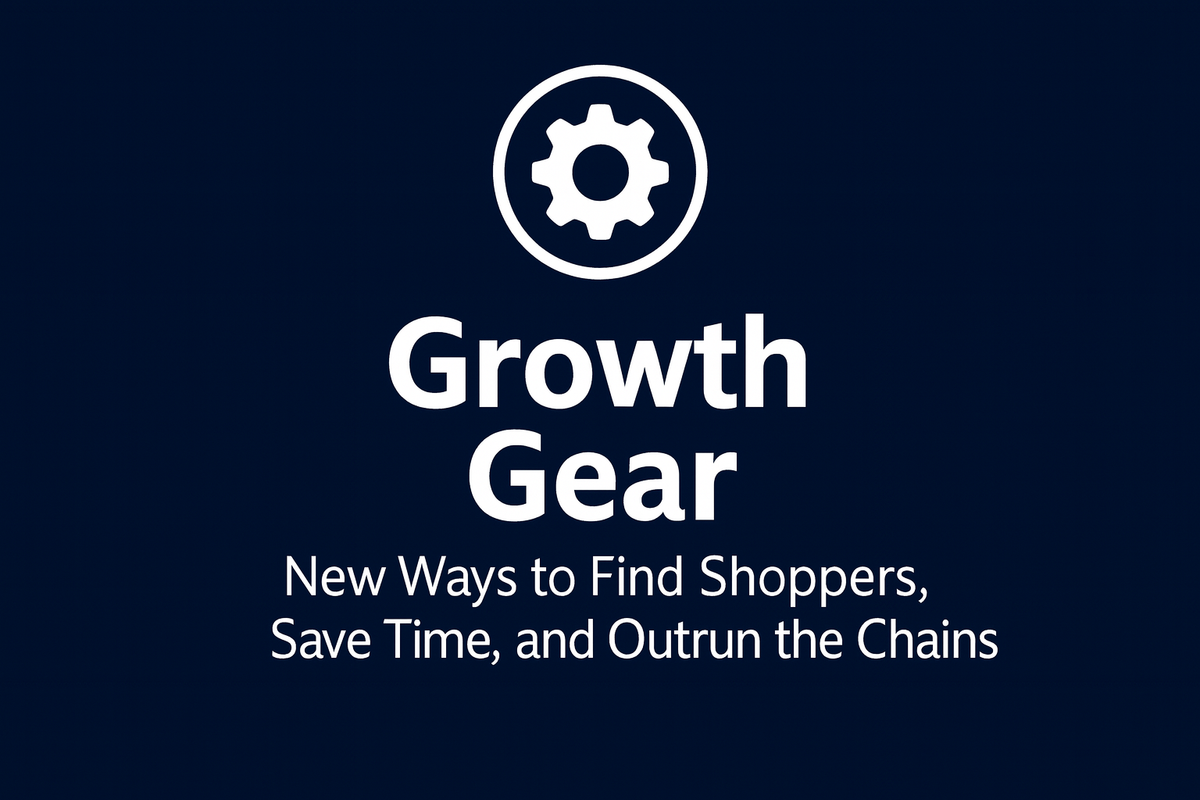
Stores that optimize atmospheric elements achieve 12-18% higher average transaction values and 20-25% longer dwell times compared to stores focused only on product assortment, according to retail environment research from the Journal of Retailing and NRF Foundation studies on consumer behavior. Yet most convenience store operators still treat atmosphere as an afterthought, investing heavily in inventory and equipment while ignoring lighting quality, music selection, cleanliness standards, and layout design that directly influence spending behavior.
The cost of atmospheric neglect appears gradually. Customers enter for fuel or a single item, complete their transaction in under two minutes, and leave without discovering premium coffee, prepared food, or impulse categories. When atmosphere is neglected, stores become purely functional transaction spaces rather than destinations. Sales data reveals the missed opportunity: stores with deliberate atmospheric design see customers browsing 90-120 seconds longer per visit, generating $2-4 additional spending per transaction through discovered purchases.
Defining Store Atmosphere in Measurable Terms
Atmosphere is not about aesthetics or personal preference. It is the systematic design of environmental factors that subconsciously influence customer psychology, affecting mood, perceived value, time spent in store, and willingness to explore beyond original purchase intent.
Five atmospheric dimensions drive measurable behavioral changes:
Lighting Quality encompasses brightness levels, color temperature (measured in Kelvin), and strategic fixture placement. Proper lighting makes products visible, creates energy, and signals cleanliness.
Cleanliness Perception extends beyond swept floors to include restroom conditions, window clarity, organized shelves, and overall sense of order. Cleanliness directly correlates with food safety trust.
Layout Flow determines how customers move through space, which categories they encounter, what impulse opportunities present themselves, and how easily they navigate.
Sensory Elements include background music volume and tempo, ambient scents (coffee, baked goods), and temperature comfort. These factors operate below conscious awareness but affect dwell time significantly.
Visual Merchandising covers signage clarity, promotional display quality, price visibility, and color-coded category organization. Professional merchandising helps customers shop efficiently while discovering new items.
These elements work subconsciously. Customers rarely articulate "I stayed longer because the lighting was excellent." They simply feel more comfortable browsing, trusting the environment, and exploring beyond their intended purchase.
The Five Atmospheric Levers That Drive Revenue
Lever 1: Lighting Strategy
Bright, modern LED lighting in the 4000-5000K color temperature range increases sales 8-12% by improving product visibility and creating an energetic environment that encourages browsing. This color temperature mimics natural daylight, making products appear fresh and colors accurate.
Targeted accent lighting on foodservice displays, premium beverage coolers, and prepared food cases draws customer attention to high-margin categories. Strategic overhead placement eliminates shadows that obscure products and pricing.
Conversely, dim fluorescent lighting (common in older stores) signals low quality, makes reading labels difficult, and subconsciously encourages quick exits. The yellowish cast of old fluorescents makes food appear unappealing and creates an outdated impression that undermines premium pricing.
Lever 2: Cleanliness Standards
Research shows 67% of customers who encounter dirty restrooms leave immediately without purchasing, according to Cintas facility services research. Negative online reviews mentioning cleanliness reduce foot traffic by 15-20% as potential customers choose competitors.
Cleanliness creates trust. Spotless restrooms signal that food handling areas receive equal care. Clean, streak-free windows allow natural light penetration and project professionalism. Floors mopped twice daily (mid-morning and evening) maintain appearance during peak hours. Organized shelves with proper facings show attention to detail that transfers to perceived food quality.
The cleanliness standard must be consistently excellent, not occasionally acceptable. A single dirty restroom visit permanently changes some customers' perception of the entire operation.
Lever 3: Layout Optimization
Strategic category placement forces beneficial customer movement patterns. Placing destination categories (coffee stations, restrooms) at the back of the store requires customers to walk past impulse zones, increasing exposure to unplanned purchases.
Cross-merchandising related items capitalizes on natural purchase combinations: chips displayed near beer coolers, candy at checkout, hot food near fountain drinks. This proximity increases basket size 15-20% by making complementary purchases convenient rather than requiring backtracking.
Dead zones (poorly lit corners, narrow aisles without destination categories, areas behind columns) waste valuable real estate. Every square foot should contribute to either traffic flow or merchandising opportunity.
Lever 4: Sensory Design
Background music at 60-70 decibels with slower tempo measurably slows shopping pace, extending dwell time and increasing basket size. Music creates ambient comfort without distraction. Silence feels awkward, accelerating exits. Loud music (typical of some chains targeting youth demographics) also accelerates shopping, reducing browsing time.
Pleasant scents trigger hunger cues and positive associations. Fresh coffee aroma near entrances creates welcoming first impressions. Baking scents near prepared food cases stimulate appetite for impulse food purchases. Scent marketing research shows 40% increase in purchase intent for food categories when complementary aromas are present.
Temperature comfort (68-72°F year-round) encourages lingering. Uncomfortably hot or cold stores push customers toward quick transactions. Consistent temperature also signals operational competence.
Lever 5: Visual Merchandising
Professional signage with clear pricing, easy-to-read fonts, and logical hierarchy helps customers find products faster while discovering new items through well-designed promotional displays. Color-coded category zones (blue for beverages, red for snacks, green for fresh food) create visual organization that reduces shopping friction.
Cluttered, handwritten signs suggest amateur operation and undermine premium positioning. Missing price tags create frustration that aborts purchases. Promotional displays highlighting deals draw attention to profitable items while creating urgency through limited-time messaging.
Listening to the Floor: Sam Walton's Wisdom Applied
Sam Walton famously said: "The people closest to the customer know the truth." This principle applies perfectly to atmospheric design.
Just as Walton walked store aisles listening to associates and customers to discover what truly mattered, convenience store operators must observe how customers actually move through and respond to their environment. Employees see which aisles customers avoid (poor lighting? cluttered merchandise?), which restrooms generate the most complaints (cleanliness failure?), and which displays generate questions versus purchases (confusing signage?).
The floor holds the truth. When operators listen by watching traffic patterns, measuring dwell time by zone, and asking why customers left without buying, atmospheric problems become visible. Theory matters less than evidence. Customer behavior reveals what works.
This mirrors The Office Prodigy's systematic observation methodology: data-driven environmental improvements eliminate guesswork and build revenue systematically. When you measure which atmospheric changes correlate with increased spending, you invest resources where returns are provable, not where industry trends suggest.
The Compounding Benefits of Atmospheric Excellence
Higher Transaction Values
Extended browsing time creates more impulse opportunities. Customers discovering premium coffee or prepared food through comfortable exploration add $2-4 per transaction. Across 500 daily transactions, that compounds to $1,000-2,000 additional daily revenue, or $365,000-730,000 annually.
Increased Visit Frequency
Stores become destinations rather than just fuel stops when atmosphere is welcoming. Customers choose preferred stores over slightly closer competitors when environmental quality differs significantly. Visit frequency increases translate to lifetime value growth per customer.
Premium Pricing Power
Clean, well-lit, organized stores justify prices 5-10% higher than dingy competitors. Customers perceive value alignment between environment and pricing. Attempting premium pricing in poor atmospheric conditions generates price resistance and negative reviews.
Positive Word-of-Mouth
Excellent atmospheres generate recommendations. Customers tell friends about "the really clean c-store with great coffee." Poor atmospheres generate warnings: "avoid that dirty place." This organic marketing compounds over time.
Competitive Differentiation
When chains deploy standardized, sterile environments, independent operators can create locally relevant, welcoming spaces that feel personal rather than corporate. Atmosphere becomes a sustainable competitive advantage when executed consistently.
Implementation Strategies for Immediate Impact
Conduct Comprehensive Atmospheric Audits
Walk your store as a first-time customer would. Enter from the parking lot. Note cracked pavement, faded signage, dirty windows before you reach the door. Inside, systematically evaluate:
- Burned-out bulbs or dim sections
- Floor cleanliness (sticky spots, visible dirt)
- Restroom conditions (supply inventory, odor, visible grime)
- Temperature comfort throughout the store
- Confusing or missing signage
- Cluttered displays or blocked sightlines
Create prioritized fix lists organized by cost and expected impact. Quick wins (replace bulbs, deep-clean restrooms, remove outdated signage) should be completed within 48 hours. Capital improvements (LED lighting retrofit, layout reconfiguration) get scheduled with ROI projections.
Measure Dwell Time by Zone
Use security camera footage or manual observation to track how long customers spend in different store areas. Zones with under 30 seconds average dwell time need atmospheric intervention. Common problem areas include:
- Corners with poor lighting
- Categories with cluttered merchandising
- Aisles lacking clear signage
- Areas with temperature discomfort (near doors, under HVAC vents)
Address identified problems systematically, then remeasure to confirm improvement.
Implement Rigorous Cleanliness Protocols
Create non-negotiable standards:
- Hourly restroom checks with signed logs
- Floor mopping twice daily (mid-morning and evening rush preparation)
- Weekly deep-clean schedules for coolers, windows, and hard-to-reach areas
- Daily trash removal from customer-facing areas
Assign specific ownership for each task. Inspect randomly rather than on predictable schedules. Make cleanliness a firing-level performance standard, not a suggestion.
Upgrade Lighting Systematically
LED conversion delivers 12-18 month payback through combined energy savings (50-60% reduction in lighting costs) plus sales lift (8-12% in well-executed retrofits). Start with highest-traffic zones: entrances, checkout, foodservice areas. Expand gradually across the store.
Specify 4000-5000K color temperature for retail environments. Avoid warm white (2700-3000K) which works for restaurants but makes c-stores feel dim. Cool white (5000-6500K) can feel too stark and clinical.
Test Sensory Elements with Measurement
Before investing in permanent systems, trial sensory improvements and measure results:
- Music: Test licensed background music service (SiriusXM for Business, Mood Media) for 90 days. Compare average transaction value and dwell time before/during trial.
- Scent: Test coffee aroma machines near entrances. Track foodservice category sales before/during/after trial.
- Temperature: Adjust thermostat settings and monitor customer feedback plus sales per square foot in affected zones.
Only implement permanently what demonstrates measurable positive impact.
Optimize Layout Using Traffic Data
Analyze POS data to understand which items sell together. Use this to inform cross-merchandising placement. Review security footage to identify actual traffic patterns (not assumed patterns).
Place impulse categories along high-traffic paths. Relocate slow-moving categories out of prime real estate. Test changes for 30-60 days, measuring sales impact before making permanent fixture investments.
Building Long-Term Atmospheric Advantage
Independent operators who master atmospheric design compete successfully against chains by creating unique, locally relevant environments that feel welcoming rather than transactional. Chains optimize for operational efficiency and cost control, often sacrificing atmospheric quality. This creates opportunity for independents willing to invest in environment.
Atmosphere is not decoration. It is a revenue driver backed by environmental psychology research and proven through sales data. Operators who listen to their floor, observe customer behavior, and systematically improve environmental quality don't guess what atmosphere works. They measure, test, and optimize based on evidence.
The people closest to the customer know the truth. Your floor reveals which atmospheric elements drive spending and which waste money. Employees report which restrooms need more frequent attention. Security footage shows which aisles customers skip. Sales data indicates which sensory changes correlate with basket size increases.
Listen, observe, and act on evidence, not assumptions. When you measure atmospheric impact systematically, you transform stores from functional spaces into profitable destinations that customers choose repeatedly.
This article is part of the weekly "Growth Gear" series from C-Store Thrive.
Found this analysis helpful? Share C-Store Thrive with fellow convenience store owners who want to turn their stores into destinations through strategic atmospheric design that increases spending, extends visits, and builds competitive differentiation one environmental improvement at a time.
